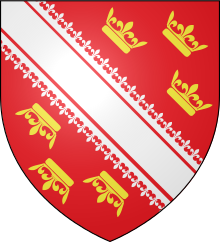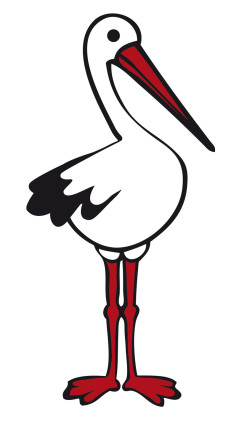Strasbourg and the Alsace
For many centuries, the Alsace region of France has been a summer nesting ground for white storks (Ciconia ciconia). These majestic störigs are large, long-necked white birds with black-tipped wings that can span up to 2 meters. They are hefty—between 5 and 10 pounds—and build very large nests that can weigh on average about 130 to 550 pounds!
White storks migrate annually up to 9,300 miles each direction, wintering as far away as South Africa and returning to different areas of Europe in early spring. The male arrives first to prepare the nest. Mating begins in earnest once the female arrives, and chicks are hatched a few weeks later. By early autumn, these children are ready to leave the nest, and head south in advance of their parents.
Once ubiquitous across Europe, today white storks are largely found in Eastern Europe (Poland, Ukraine, Baltic countries, as well as Spain), but a small population continues to live in Strasbourg and the surrounding area. This part of northeastern France has a plentitude of small waterways and wetlands that provide ideal feeding grounds for the large wading birds.
One of the most well-known attributes of white storks is their lasting relationships. Storks pair up for life and return to the same area and often the same nest, year after year. In Alsace, many people add special nesting platforms on the roofs of their houses to encourage nesting in the village/city centers and prevent chimneys from being blocked. As a result, there is distinct look to the rooftop skylines of many villages in the region.
The faithfulness of white stork couples and their yearly return to produce and raise their offspring has led them to be associated with various beliefs. Ancient societies associated storks with newborns. For Ancient Egyptians, the stork also represented human souls, which were reincarnated when storks returned in the spring. In Norse mythology, storks were seen as a symbol of fidelity and monogamy.
In Germanic religious beliefs, (particularly those relating to Holda, the Goddess of Birth and Death), Holda sent souls back to earth as raindrops that gathered in lakes and springs. Elves caught them and delivered them to future mothers who placed sugar cubes on their windowsills to indicate they desired a new baby.
The Stork
Stork
Storks came into the story in the 19th century when Hans Christian Andersen in his fairy tale The Storks, replaced Holda’s elves with the beautiful white birds that retrieved babies from under the marshes for delivery to new mothers.
There are other specific versions in the Alsace region. In one, souls ended up in the underground lake beneath the Strasbourg cathedral. Women who wanted to be mothers expressed their desire over the children’s well (Kinderbrunnen). An elf caught a baby and placed in on the edge of the well for a stork to collect it and carry it away in a basket or blanket. Another tale has babies found in caves known as Adeborsteines in German (stork stones). For children that want a new sibling, another folk tale says placing sweets on the windowsill may encourage a stork to bring a baby to the house.
Today, storks in Alsace are associated with not only fidelity/loyalty and fertility, but also good luck and happiness. In the 1970s, however, the presence of white storks in the region was seriously threatened by a confluence of factors, including the canalization of the Rhine in Europe, widespread use of certain pesticides in Africa, drought in the Sahel, over-hunting, and electrocution by high-voltage power lines.
Several steps have been taken to boost the Ciconia ciconia population in the country. The first reintroduction center for the white stork in Alsace was opened at the Parc de l’Orangerie in Strasbourg. Close to a thousand storks have been born at the park since the early 1970s. Due to the design of the habitat in the park, some of the storks remain all year round. In 1983, France implemented a country-wide repopulation program that has also been successful in increasing the number of nesting pairs in the Alsace region.
Illkirch-Graffenstaden, the location of Polyplus headquarters, is a suburb of Strasbourg and the home to many nesting white stork couples. Like these majestic birds, Polyplus is also known for its ability to deliver, not babies, but next-generation genetic medicines. Our advanced transfection solutions for DNA and RNA support the development and manufacture of novel therapeutics and vaccines that can change people’s lives.
In addition, the entire team at Polyplus is loyal to our customers and focused on enabling their success through ongoing innovation, meaningful collaboration and superior service and technical support. We also recognize the value of our employees and shareholders and emphasize assuring fidelity to both as the company grows and evolves. Finally, Polyplus is committed to pursuing sustainable science and manufacturing. Protecting the environment—and precious natural resources like the beautiful white stork—is a top priority achieved by minimizing our footprint, streamlining our supply chain and constantly seeking opportunities for improvement.



 Stork
Stork